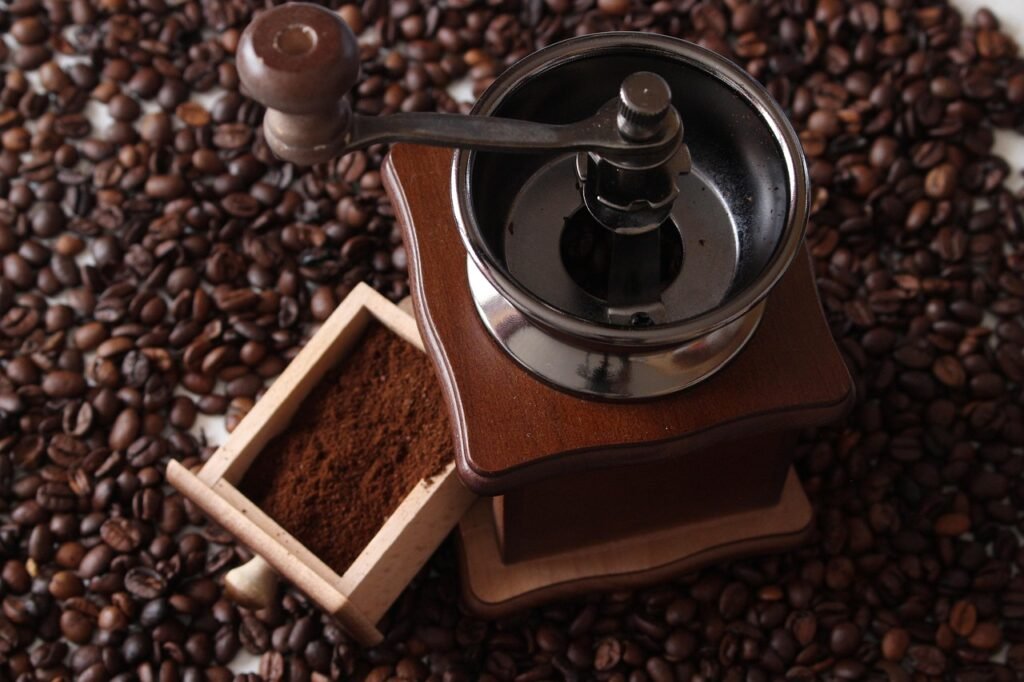
Artisanal Rituals for a Memorable Customer Experience
How can brands create a more balanced and memorable customer experience by blending artisanal product quality with thoughtful everyday rituals that keep people coming back?

Is coffee leaving a sour taste and discomfort behind, leading you to believe a satisfying cup is beyond reach? Fear not, for there’s a solution in the form of least acidic coffee. This smooth revelation, featuring reduced quinic acid levels and a pH closer to neutral, promises a gentler coffee experience.
Delve into this detailed exploration of what defines coffee acidity and how you can enjoy mellow, flavorful brews without the unwanted side effects. Discover the science behind least acidic coffee options and find out how they can transform your morning ritual into a soothing haven.

Coffee’s acidity comes from the coffee beans, roasting methods, and caffeine content. Beans grown at high elevations often have higher acidity, giving many specialty coffees their bright, tangy flavors. Lighter roasts also keep more of the beans’ natural acids compared to darker roasts. Caffeine itself can trigger stomach acid production, leading to discomfort like acid reflux.
Low Acid coffee minimizes these acidic traits. It contains less quinic acid and has a pH level closer to neutral, around 6. This makes it easier on the stomach while keeping its flavor intact.
Factors affecting coffee acidity include:
Least acidic coffee can be a great option for those with sensitive stomachs. It may reduce acid reflux and other digestion issues, offering a smoother taste experience.

Selecting a suitable low acid coffee brand is important for a smoother, more stomach-friendly brew. With many brands offering unique blends, finding one that meets your taste and health needs is key.
Golden Ratio offers innovative low acid options like Chai Spiced and Vanilla Coconut. Packaged in organic cotton, these flavors provide easy brewing with minimal acidity.
Lifeboost Coffee is celebrated for its organic, low acid varieties. It offers light, medium, and dark roasts, including decaf and Keurig-compatible pods, all gentle on the stomach.
Volcanica Coffee uses high-quality Costa Rican beans for its specialty options like peaberry. Their custom roasting process ensures each order is freshly prepared, enhancing both flavor and low acidity.
Lucy Jo’s specializes in low acid blends like Sumatra, known for nutty and chocolatey notes. Their variety pack lets you explore different profiles while enjoying reduced acidity.
Tieman’s Fusion Coffee combines low acid coffee with health-boosting ingredients like matcha green tea, rooibos, and goji berry powder. This blend offers a light texture and high antioxidants.
Puroast provides a smooth, non-bitter experience with its dark French roast, widely available in stores like Walmart.
Brewing methods greatly affect coffee’s acidity. Techniques like using coarser grinds, fine filters, or cooler water can reduce acidity but might alter the flavor, resulting in a milder taste.
Cold brew is a popular method for least acidic coffee. Steeping grounds in cold or room-temperature water for 12 to 24 hours results in a smoother, less acidic taste. Using an espresso machine for a quicker brew also reduces acid extraction.
Effective techniques include:
These methods help achieve lower acidity and enhance taste, offering a gentler, least acidic coffee cup that suits digestive comfort.
Regular acidic coffee can cause digestive issues like acid reflux. Quinic acid and other acids irritate the stomach lining, worsening acid reflux.
Low acid coffee offers several benefits:
For those with stomach issues, least acidic coffee options offer a more enjoyable experience, balancing flavor with stomach-friendliness.

Home-roasting provides control over bean selection and roast level, ideal for minimizing acidity. Choosing beans and roast profiles that suit personal preferences allows for a unique and gentle coffee experience.
To achieve low acidity:
Home-roasting lets you customize flavor and acidity in, providing flexibility to experiment with different beans and techniques, creating a brew that aligns with both taste preferences and digestive comfort.
Exploring the intricacies of coffee acidity, it becomes clear how pivotal roasting techniques, bean selection, and brewing methods are in determining a coffee’s acidity. By delving into least acidic coffee options, one can enjoy a satisfying cup without the discomfort often associated with more acidic varieties.
Selecting the right brands and adopting recommended brewing techniques can greatly enhance the experience for those with sensitive stomachs. The shift toward least acidic coffee offers a more comfortable and palatable option, making it a wise choice for coffee enthusiasts seeking balance without sacrificing quality.
Arabica beans, especially when dark-roasted, tend to be the least acidic. Origin and processing methods, such as shade-grown or low-elevation sourcing, also impact acidity levels.
Low acid coffees, like those from Lifeboost or Puroast, are best for acid reflux. They offer reduced quinic acid content, which can help minimize digestive discomfort.
Cold brew coffee is the least acidic caffeine drink. It’s brewed with lower temperatures and longer steeping times, resulting in a smoother, less acidic flavor profile.
Opt for coarser grind, use cold brewing, or choose espresso methods with fine filters to reduce coffee acidity. Selecting dark-roast beans also helps in achieving less acidic coffee.
Golden Ratio, Lifeboost, and Volcanica Coffee prioritize unique sourcing and roasting methods. Notable features include organic offerings, custom roasts, and blending techniques to ensure low acidity.

How can brands create a more balanced and memorable customer experience by blending artisanal product quality with thoughtful everyday rituals that keep people coming back?

Independent coffee shops have always been about more than caffeine—they’re hubs of creativity, connection, and care. As café culture continues to evolve, new trends are

Introduction Independent cafes win when they feel like the neighborhood’s living room and operate with the discipline of a great kitchen. Below is a quick

Discover how top specialty coffee brands create lasting loyalty through storytelling, sourcing, and community connection. Real tips from 6 industry experts.

Discover the ultimate showdown between two beloved coffee brewing methods: the French press and Chemex. Explore how each technique caters to distinct palates, with the French press delivering bold flavors and the Chemex presenting a bright, clean taste.

Unlock the secrets to brewing the perfect cup of coffee with our comprehensive guide on using a coffee scale. Discover how precise measurements enhance flavor and consistency while eliminating bitterness.

Discover how water temperature plays a vital role in brewing the perfect cup of coffee. This article delves into the ideal temperature range of 195°F to 205°F for optimal flavor extraction, enhancing the enjoyment of high-quality beans.

Discover the world of curated specialty coffee bundles, perfect for enthusiasts seeking quality and craftsmanship. This article explores the benefits of ethically sourced, small-batch beans from brands like Equipoise Coffee, offering diverse flavor profiles that elevate your brewing experience.

Discover the art of manual brewing to elevate your coffee experience! This article explores various techniques like pour-over, French press, and AeroPress, revealing how they enhance flavor and your connection to every cup.